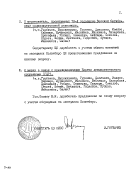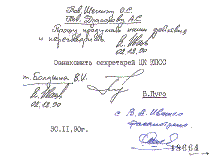
 conversion to a market economy
conversion to a market economy
From modest beginnings at the Twenty-Seventh Party Congress in 1986, perestroika, Mikhail Gorbachev's program of economic, political, and social restructuring, became the unintended catalyst for dismantling what had taken nearly three-quarters of a century to erect: the Marxist-Leninist-Stalinist totalitarian state.
The world watched in disbelief but with growing admiration as Soviet forces withdrew from Afghanistan, democratic governments overturned Communist regimes in Eastern Europe, Germany was reunited, the Warsaw Pact withered away, and the Cold War came to an abrupt end.
In the Soviet Union itself, however, reactions to the new policies were mixed. Reform policies rocked the foundation of entrenched traditional power bases in the party, economy, and society but did not replace them entirely. Newfound freedoms of assembly, speech, and religion, the right to strike, and multicandidate elections undermined not only the Soviet Union's authoritarian structures, but also the familiar sense of order and predictability. Long-suppressed, bitter inter-ethnic, economic, and social grievances led to clashes, strikes, and growing crime rates.
Gorbachev introduced policies designed to begin establishing a market economy by encouraging limited private ownership and profitability in Soviet industry and agriculture. But the Communist control system and over-centralization of power and privilege were maintained and new policies produced no economic miracles. Instead, lines got longer for scarce goods in the stores, civic unrest mounted, and bloody crackdowns claimed lives, particularly in the restive nationalist populations of the outlying Caucasus and Baltic states.
On August 19, 1991, conservative elements in Gorbachev's own administration launched an abortive coup d'tat to prevent the signing of a new union treaty the following day and to restore the party's power and authority. Boris Yeltsin, who had become Russia's first popularly elected president in June 1991, made the seat of government of his Russian republic, known as the White House, the rallying point for resistance to the organizers of the coup. Under his leadership, Russia embarked on even more far- reaching reforms as the Soviet Union broke up into its constituent republics and formed the Commonwealth of Independent States.

 conversion to a market economy
conversion to a market economy
A conference convened in Leningrad in October, 1990, by the conservative communist organization "Unity--for Leninism and Communist Ideals" demanded radical changes in Mikhail Gorbachev's policy of perestroika and its implementation. Participants in the conference accused Gorbachev of following a course that would restore capitalism in the Soviet Union, and they appealed to party organizations and members to demand convocation of an extraordinary Party Congress to remove Gorbachev from power. This resolution was given to the Central Committee on November 29, 1990, and assigned for action to two Politburo members by V. Ivashko, who notes on the document, "Please think about this, and let's talk."

 Resolution by the Society "Unity, for
Leninism and Communist Ideals," October 28, 1990, expressing
lack of confidence in the policies of Gorbachev as General
Secretary of the Central Committee.
Resolution by the Society "Unity, for
Leninism and Communist Ideals," October 28, 1990, expressing
lack of confidence in the policies of Gorbachev as General
Secretary of the Central Committee.

Please follow the guide back to the entrance hall or have a look at one of these showcases:
When you have seen them all you should walk back to the entrance hall